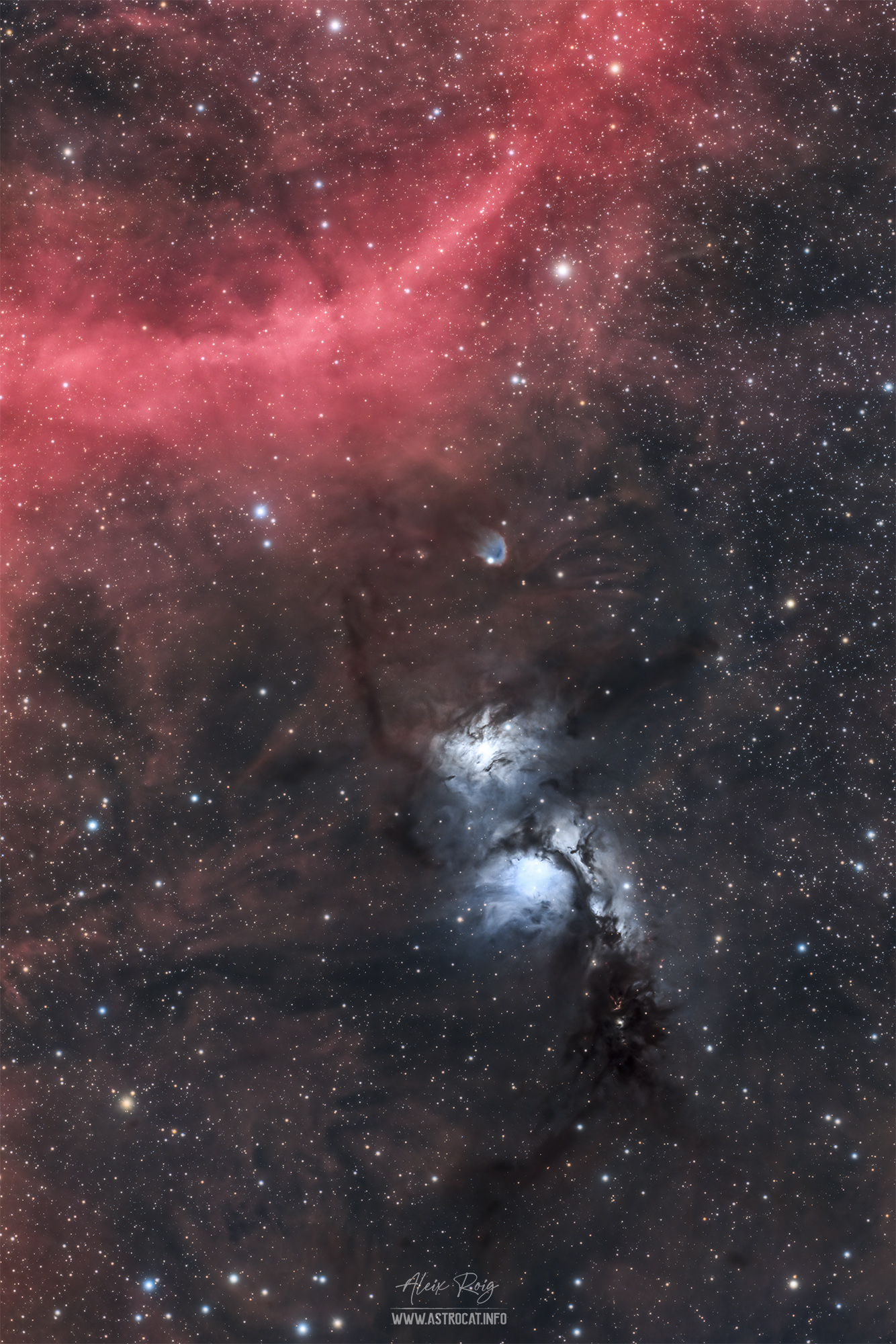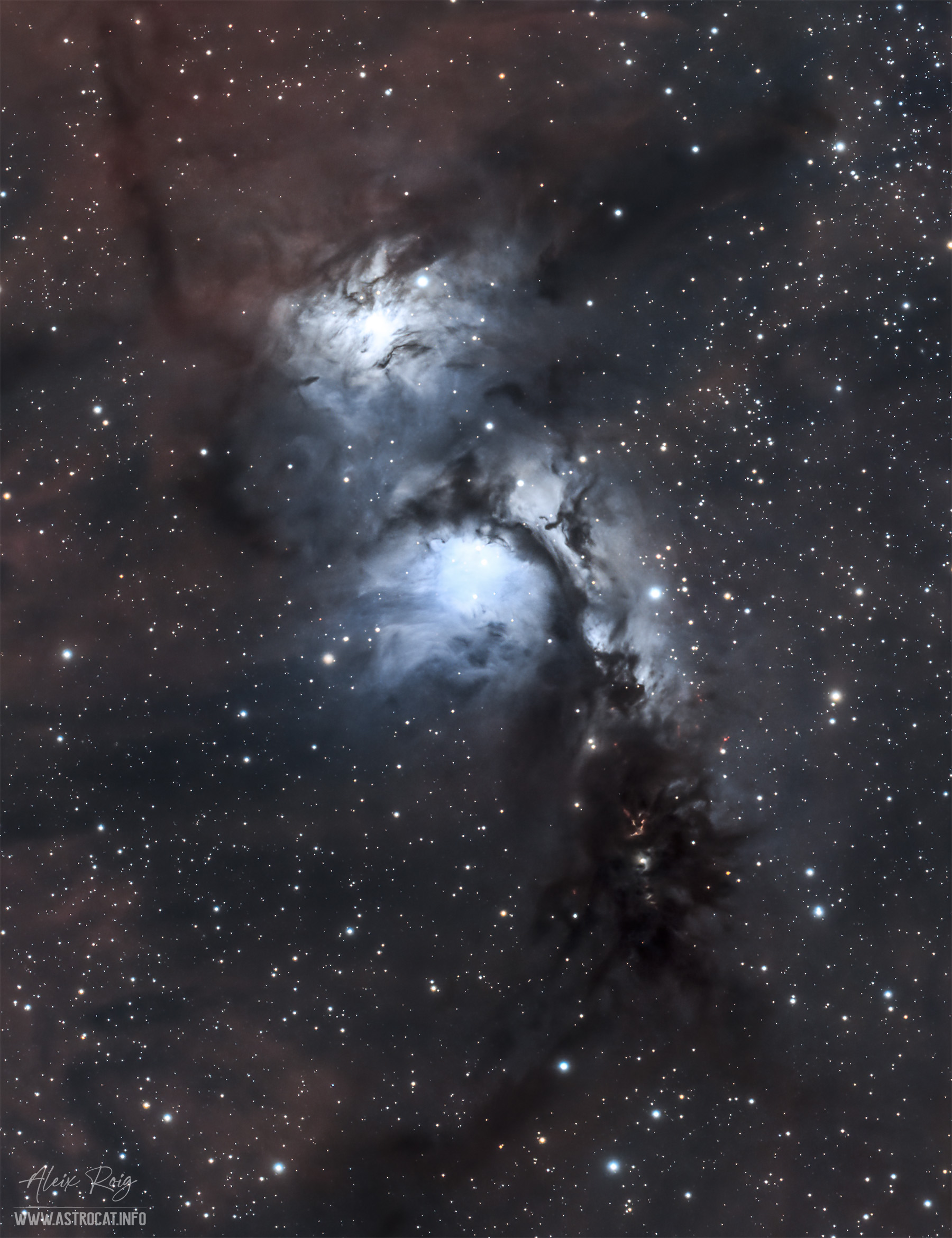The M78 Nebula or NGC2068 is a reflection nebula that can be found in the Orion constellation. This constellation is well known to have huge HII regions with strong emissions.
In this image we can see part of the Orion Molecular Cloud Complex: the Barnard’S Loop. Emission, reflection and dark nebulae are present in this wide field. The Orion Cloud lays around 1,500 light years away from us. The most popular object in this region is M42, also called the Orion Nebula, one of the brightest deep sky objects.
17 Herbig-Haro objects can be found in the M78 structure. These are patches of nebulosity associated with newly born stars.
The image shown above has been composed using new data from last week’s acquired with my new FSQ Takahashi dual setup. LRGB broad band filters together with the Hα narrow band filter has helped me to show the hydrogen emissions from the Barnard’s Loop.
Thanks for taking your time on this site.
Image Details
FSQ106:
L: 175×300″ (14h35′)
RGB: (14,20,15) x 300″ (4h05′)
FSQ85:
Ha: 205×300″ (17h05′)
Calibrated with darks, flats and dark-flats.
Total exposure: 35h45′
Moon at 20% (on average)
Image resolution: 1.46”/pixel
FOV (full image): 146′ x 98′ (diagonal = 177′)
Equipment
FSQ106 EDX4 + ASI2600MM + LRGB Astrodon filters + Ha3nm Antlia – with ZWO EFW 7 pos
FSQ85 + ASI294MM + SHO LRGB Baader filters – with ZWO EFW 8 pos
Mesu200 mount
Guiding with ASI120MM and ZWO Mini Guide Scope
Software
SGP, PHD2, APP, PIX, LR, TPZ, PS.
Aleix Roig, January 2022
Prades (Tarragona, Catalonia – Spain).
Full HD view on Astrobin:
https://www.astrobin.com/qpnwq6/




